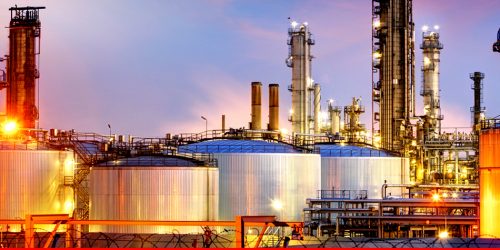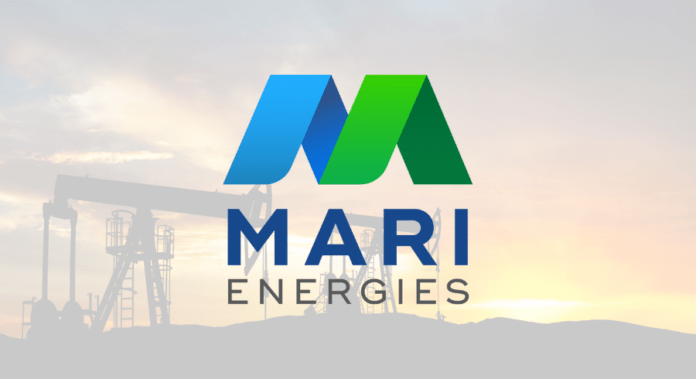Indian Oil Corp, the country’s biggest state-owned refiner, has been running its nine refineries at an average run rate of around 90% in October, company officials said Oct. 26. In September, IOC recorded an 82% average run rate for its nine refineries compared with 83% a year ago month.
They said the higher runs were on account of an improvement in demand for transportation fuels, mainly gasoline and diesel, as the threat of a third wave of the coronavirus pandemic waned in Asia’s third-largest economy.
Separately, India’s average refinery run rate rebounded to 89% in September from a year-to-date low of 87% in August and 86% a year earlier, the oil ministry’s latest monthly survey showed, which analysts attributed to rising demand for transport fuels as pandemic movement restrictions eased.
Domestic demand for oil products rose 5.2% year on year to 15.92 million mt, or 4.2 million b/d, in September as India emerged from its second wave of the coronavirus pandemic, but edged up only 0.1% from August as unseasonal rain across many parts of the country hampered transportation, the Ministry of Petroleum and Natural Gas data showed.
The run rate of state-run refineries averaged 83% in September, stable from a year earlier and up from 82% in August.
IOC operated at an average of 82% across its nine stand-alone refineries in September, compared with 81% a year earlier and 83% in August, with one of its major refineries at Paradip undergoing maintenance.
India’s No. 2 refiner, Bharat Petroleum Corp. Ltd., operated at 102% in September, compared with 84% a year earlier and 102% in August, and No. 3 Hindustan Petroleum Corp. Ltd. was at 74%, compared with 108% a year earlier and 58% in August, amid a maintenance shutdown at its Mumbai refinery.
Privately owned refineries operated at an average of 95% in September, up from 89% a year earlier and 91% in August.
Reliance’s domestic unit operated at 105% in September, up from 102% a year earlier and 102.5% in August, while its export-focused refinery ran at 82%, up from 77% a year earlier and 75% in August. Its combined run rate was 93%, up from 89% a year earlier and 88% in August.
Rosneft-owned Nayara Energy operated at 93% in September, compared with 89% a year earlier and 101% in August.
Meanwhile, Vietnam’s Binh Son Refining and Petrochemical, or BSR, has increased the capacity of its 130,000 b/d refinery at Dung Quat to 100% from 85% earlier, with demand expected to rise following the easing of lockdowns across the country, a source from BSR said Oct. 20. The capacity has been raised to 100% since early October.
Domestic demand is expected to surge in accordance with the reopening of economic activities in several localities, the source said.
Vietnam’s Ministry of Transport on Oct. 20 announced that air carriers are allowed to increase their domestic flights on a number of major routes during Oct. 12-Nov. 30, following the pilot resumption of 38 flights over Oct. 10-20.
Pakistan’s refinery production and utilization rates are increasing amid “recovery” in fuel oil production, known as furnace oil in the country, as demand for power generation is increasing due to rising LNG and coal prices, Karachi-based brokerage firm Sherman Securities wrote in a note.
Furnace oil can be used as a source of power generation, and its use is rising globally due to the recent spike of natural gas prices.
Fuel oil consumption in the three months ended Sept. 30 was up 38% to 1.28 million mt, compared with 920,000 mt in the year-ago period, according to data compiled by Oil Companies Advisory Council.
Furthermore, the relaxation in COVID-19 restrictions has helped boost demand for oil products, resulting in higher spreads, which in turn has pushed up the local gross refining margins, Sherman Securities said.
The October margin of $6/b is “almost double last month’s average” of $3/b and “far better” compared with the $2/b “ever since COVID started in early 2020,” Sherman Securities said, using data from the Pakistan Bureau of Statistics.
South Korea’s third-biggest refiner, S-Oil Corp., lifted its crude run rate at Onsan to average 99.2% in the third quarter, higher than pre-pandemic levels, a company official said Oct. 28, adding that it will keep crude throughput high in the fourth quarter amid strong margins in the wake of the global energy crunch.
The Q3 crude run was higher than 90.7% a year earlier, and 98.8% in the second quarter this year.
Its crude run rate averaged 96.1% for the full 2020 year, up from 95.4% in 2019, despite the COVID-19 pandemic.
The refiner also raised the operating rate of RFCC/hydrocracker to 103.8% in Q3, from 83.3% a year earlier, but slightly lower than 103.9% in Q2.
“The recent steep hike in gas prices would additionally boost refined oil products’ demand as its alternative,” the official said said.
S-Oil can maintain facilities’ throughput up to maximum capacity and maximize profitability on the back of the newly-built residue upgrading complex to produce gasoline and propylene, the official said.
The refiner started commercial production in November 2018 at a residue upgrading complex and olefin downstream complex, producing 21,000 b/d of gasoline, 405,000 mt/year of polypropylene and 300,000 mt/year of propylene oxide.
S-Oil recently upgraded its No. 1 residue hydro-desulfurization unit to expand its capacity to 40,000 b/d, from 34,000 b/d previously, with its total RHDS capacity at 166,000 b/d.
S-Oil runs two more RHDS units — the 57,000 b/d No. 2 RHDS and 69,000 b/d No. 3 RHDS — in its Onsan complex. The RHDS units will help produce more light oil products such as naphtha and ultra-low sulfur diesel.
South Korea’s top refiner SK Innovation raised its crude throughput at Ulsan and Incheon to meet stronger cracking margins, but it will not push for a sharper increase due to the lingering uncertainties in the global oil market, a company official said Oct. 29.
The refiner increased its crude throughput to 68% in the third quarter, from 66% in the second quarter, 63% in the first quarter and 61% in the fourth quarter of 2020.
Its Q3 crude run rate was still under the 72% recorded in the same quarter a year earlier, despite the restart of its 240,000 b/d crude distillation unit at the Ulsan complex, according to the official.
The refiner restarted its No. 4 CDU in April. It was shut for a month-long maintenance.
Its 64,000 b/d No. 1 RFCC (residue fluid catalytic cracker) and 90,000 b/d No. 2 RFCC ran at 90% in Q3, compared with 67% and 86% a year earlier, respectively, and 79% and 102% in Q2.
The refiner kept its run rate for heavy oil upgrader, or HOU, with a capacity 45,000 b/d, at 81% in Q3, compared with 84% a year earlier, and 69% in Q2.
The crude run rate at SK Innovation’s main Ulsan complex, run by SK Energy, on the country’s southeast coast averaged 68% in Q3, up from 64% in Q2, but down 76% from a year earlier. SK Energy runs five CDUs with a combined capacity of 840,000 b/d in the Ulsan complex.
SK Innovation’s other complex in Incheon on the west coast averaged at 69% in Q3, compared with 69% in Q2 and 60% a year earlier. SK Incheon Petroleum runs two CDUs with 275,000 b/d, and a 100,000 b/d condensate splitter.
Meanwhile, refinery closures remain in the spotlight in the Asia-Pacific region.
** New Zealand’s Refining NZ said it was working to finalize Terminal Services Agreements with customers in October to enable the conversion of its Marsden Point refinery into an import terminal in the first half of 2022. In August, it reached an in-principle agreement with ExxonMobil, the last of its three refinery customers, about the conversion of Marsden Point into an import terminal. In February, NZ Refining reached an in-principle agreement with BP and in May with Z Energy. The company said it was close to completing the detailed planning to be ready for a final investment decision.
** BP Australia is undertaking a feasibility study unto the production of green hydrogen at the site of the Kwinana refinery. It will work on the project in partnership with Macquarie Capital and with funding from the Western Australian government. The company plans to repurpose the site as a clean energy hub, “which will include the production of renewable fuels,” it said in a statement. BP also said that it is “already underway with plans to develop a renewable fuels plant at the site, producing sustainable aviation fuel and renewable diesel.” BP announced its plan to shut the refinery in October 2020 and wind down refining activities over the following six months. Refining activities were completed by the end of March 2021.
** Pilipinas Shell Petroleum Corp. said it had inaugurated “its world-class import terminal” in Tabangao, Philippines, after transforming the closed Tabangao refinery into a terminal. The refinery has been shut since May 2020, having been idled due to weak domestic product demand, and was permanently shut in August 2020.
** ExxonMobil Australia plans to shut its Altona refinery in Melbourne and convert it into a fuel import terminal. The refinery will remain in operation while transition work is undertaken.
** Australia’s Viva Energy welcomed the federal government’s announcement of a Fuel Security Package and, as part of the package, would make a six-year commitment to maintain refining operations at Geelong through to June 2027 with a further three-year option to extend until June 2030. The company decided to avoid the closure of Geelong after taking up a payment lifeline extended by the government, which lasted from January-July. Refineries that took part in the grant had to agree to maintain operations at least during the tenure of the program. The Fuel Security Service Payment started July 1 and will run until June 2027 by providing support at lower margins.
** Ampol, formally Caltex Australia, will continue refining operations at its Lytton refinery “subject to the government’s refining support package being successfully legislated as proposed.” However, Ampol also said it could convert the refinery to an import terminal “should the package not be successfully legislated or, in future, in the case of persistently low refinery margins or other adverse events.”
** Singapore Refining Company has experienced an unscheduled shutdown at its refinery on Jurong Island, several market sources said Oct. 28-29. The current run rates at the refinery are unclear. SRC could not be reached for comment, and email and phone requests for comment were not answered by the Asian close on Oct. 29. But market sources said Oct. 28-29 that the refinery was heard to be down. “It’s unplanned… I heard that they were looking to cover some cargo in the market,” a regional trader said. Another source said the outage was heard to have been a short one, but this could not be confirmed. “I think there was not much impact on the market, heard it was a short outage and it might be back already, but that is uncertain,” the source said.






